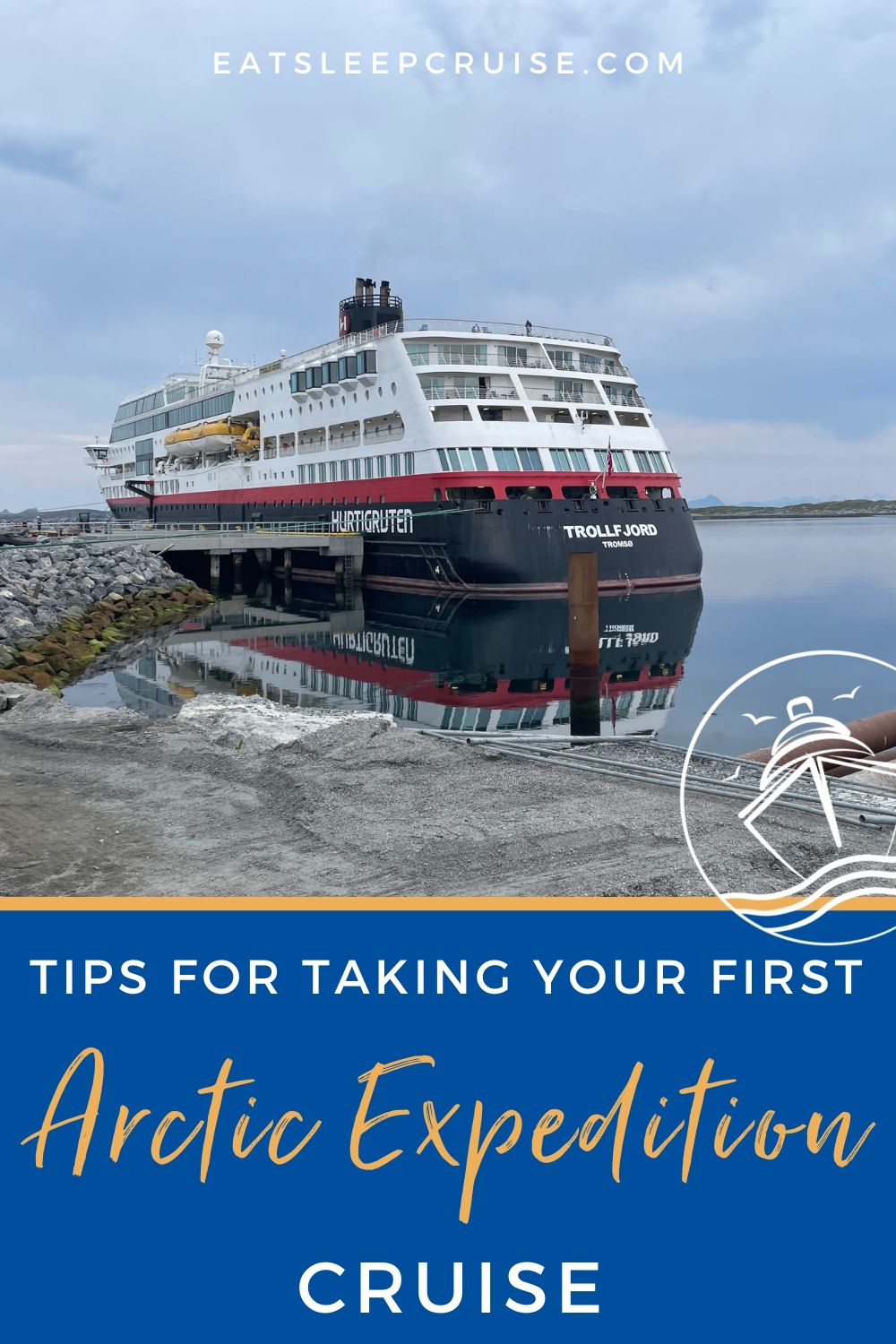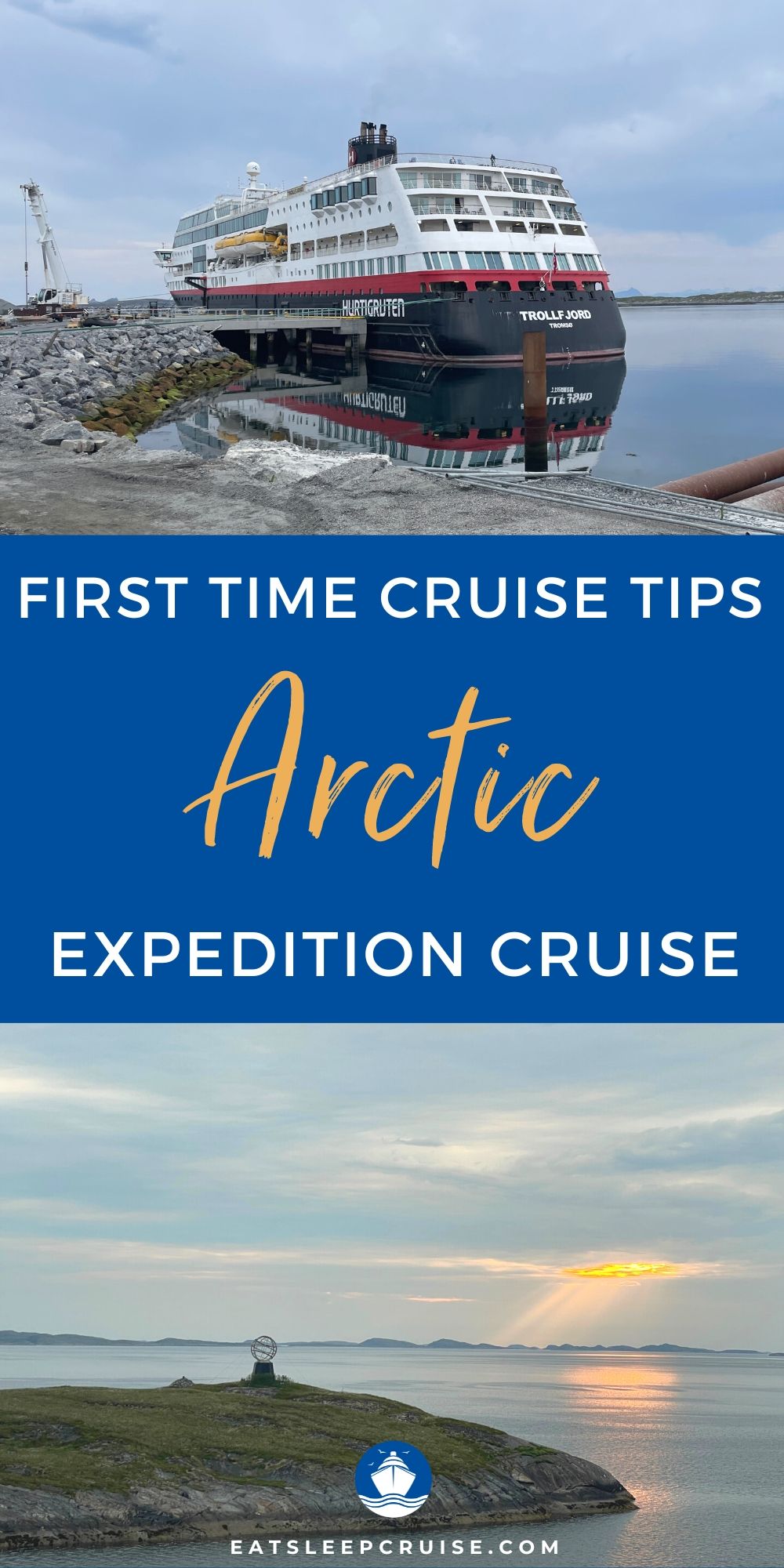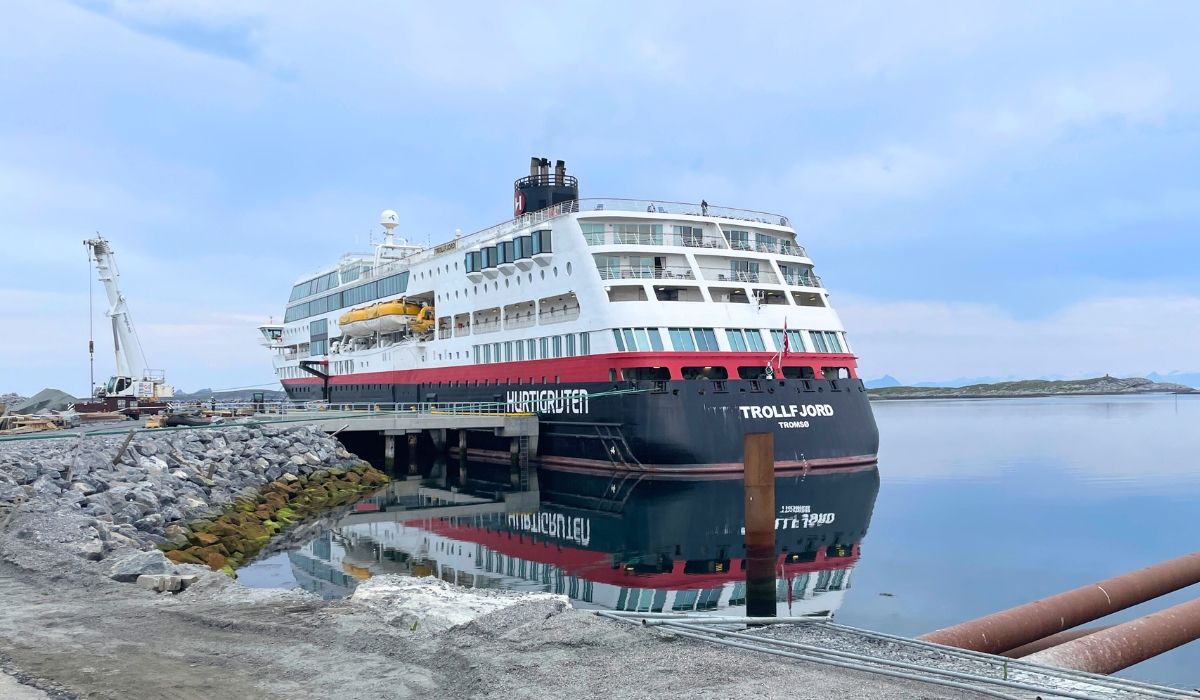The word “Arctic” evokes an icy chill and for good reason — it is the northernmost place on earth and considered a polar region. The Arctic as a cruise destination includes the very northern parts of Canada, Greenland, Russia, Scandinavia (Iceland, Norway, Finland, Sweden and Denmark) as well as the U.S. state of Alaska. Sailing the Artic Ocean, once your ship crosses 66.5 degrees latitude north of the equator, you have officially entered the Arctic Circle.
There are various cruise experiences that visit these northernly polar waters, but the most common is an Arctic expedition cruise. These voyages employ expedition guides and watercraft like Zodiacs to get closer to the region’s unique glacial landscapes and rare wildlife — including the elusive polar bear. With active pursuits like ice hiking and kayaking, there is no more intimate way to get to know this far-flung part of the globe.

I’m just back from a June Arctic cruise to Norway’s North Cape and Svalbard islands with Norwegian cruise company Hurtigruten. As a souvenir, I’ve returned with tips and advice to guide you through planning a cruise to the top of the world.
EXCLUSIVE SAVINGS: Get Deals on Your First Arctic Expedition Cruise!
I Just Returned From an Arctic Expedition Cruise: Here Are My Top Tips
Decide between midnight sun or polar night.
Above the Arctic Circle, there are two primary times of year: when the sun never sets and when the sun never rises. While continuous night might sound unappealing, there are merits to each experience.
The summer months bring nearly 24 hours of daylight in many northernly parts of the world, peaking toward the summer solstice in late June. Conversely, polar night occurs in the winter months in many Arctic countries, with very murky light that gives the impression the sun never fully rises. We break down what to know about each experience below.
Pros of midnight sun
- Continuous daylight means there is plenty to see; scenery can noticeably pass by your ship at 11 p.m.
- With better visibility, there are more chances to see wildlife like arctic foxes, whales, reindeer and more during the summer months
- While the Arctic never gets summery, per se, midnight sun brings manageable temperatures of about 40 F
- With less sea ice, more routes are available to sail during these warmer months
Cons of midnight sun
- Never-ending sunlight can mess with your internal clock and affect sleep; packing a sleep mask is a must
- With no dark skies, you won’t see the northern lights during this time of year

Pros of polar night
- Sightings of the dancing northern lights is almost guaranteed
- Activities like dog sledding and snowmobiling are on offer in snowy winter
- Winter is a unique time to visit the Arctic and might offer better pricing
Cons of polar night
- Needless to say, this time of year is going to be very cold and requires lots of toasty layers
- Continuous dark is not for everyone and could get a bit dreary for some
Narrow down your itinerary options.
With about nine countries listed that fall within the Arctic, you’re going to have to hone in on just one or two that constitute an Arctic cruise itinerary. Not every place is accessible depending on the time of year. For example, cruises to Alaska are not run during the winter months.
Common Arctic expedition cruise itineraries include Svalbard and the northern Norwegian fjords; the Canadian High Arctic and Northwest territories; and Iceland and the coastline of East Greenland. Less visited are the uninhabited archipelagos of Russia’s remote Arctic.
Looking to cross the fabled Northwest Passage? You can do it on a cruise ship from Greenland into Arctic Canada. When considering where to book your Arctic expedition, factor in flights as well as cultural sites and potential wildlife viewing, which differs depending on the destination.
I personally enjoyed the scenic sailing of Norway’s mountains, waterfalls and fjords as well as the opportunity to visit Norwegian towns and iconic sites like the 11 hairpin turns of Troll Road.

Be strategic if you want any chance of a polar bear sighting.
One marquee attraction that brings visitors to the Arctic is the chance to see a polar bear. While there is still a slim chance of seeing one of these rare and awesome creatures, the Arctic is their home and they are primarily scattered throughout Canada, Greenland, Svalbard (Norway), and Russia.
If you are dead set on spotting a polar bear, be sure your cruise includes a call on Churchill, Manitoba, considered the polar bear capital of the world. This coastal Canadian town is home to a staggering 900 polar bears, which makes more sense when you learn that Canada is home to more than 60 percent of the world’s entire population of these white giants.
Your next best chance of a polar bear sighting is within Greenland, which is home to more than 4,400 of these bears. While they mostly spend time on the sea ice in the Barents Sea, about 2,600 polar bears can also be seen surrounding the islands of Svalbard. While tracking these bears for tourism is strictly prohibited in Norway, there are ample day cruises and wildlife safari tours that might still increase your chances of crossing a distant polar bear.
Even though an acquaintance spotted a polar bear on an Arctic cruise in Svalbard just the week before, we didn’t have the same luck during our three days in Longyearbyen. The longer you spend here, the better you increase your chances of a sighting, so consider extending the land portion of your Arctic Norway cruise.
SCORE SAVINGS ON ARCTIC CRUISES WHEN BOOKING NOW!
Choose a cruise line that matches your comfort level.
There are many cruise lines who sail Arctic waters, but not every expedition line is the same product. After narrowing down your itinerary and the time of year you want to sail, you might still have options when it comes to choosing a cruise line to the Arctic.
Common expedition cruise lines in the Arctic include Hurtigruten, Lindblad-National Geographic, Quark Expeditions, Aurora Expeditions, Silversea, and Ponant. You can find Arctic itineraries from Viking’s relatively new expedition arm or even Adventures by Disney.
Like with any cruise decision, you’ll have to consider price point as well as inclusions and excursions. Be sure to do your research or consult with a travel advisor on the cruise style you’re seeking: Is it a small group experience (Quark and Aurora) or luxurious onboard amenities (Silversea and Ponant)? Lindblad offers world-class ice-breaking ships and expert guides, while Hurtigruten boasts authentic Norwegian fare and more than 130 years of sailing experience in the region.

Apart from the comfort of the onboard experience, be sure to closely consider the types of activities offered by each cruise line here. A true Arctic expedition cruise can be demanding, with wet landings (via inflatable watercraft), strenuous hikes, kayaking trips and other daily excursions that would demand a certain fitness level. Our sailing on Hurtigruten’s Trollfjord, a hybrid cruise experience based on its coastal express ferry, blended more active options alongside cultural walking tours and bus tours.
Don’t rush the packing process.
Our final tip when preparing for your Arctic cruise adventure is to pack ahead and to pack well. Any cruise line worth its salt will provide a relatively thorough guide of what you should bring with you on your Arctic voyage, but some items might require a trip to the store or an online shopping spree. Don’t wait until the week before to decide you should have ordered those binoculars, replaced your zoom lens or found better long underwear. The Arctic is not a place you want to be left without the right gear.
In that spirit, here is a basic packing list that we used for a summer Arctic expedition cruise. Keep in mind that it’s not comprehensive and you will need heavier layers and some different gear, depending on if you choose a wintertime sailing.

Arctic expedition cruise packing list
- Wool socks
- A thermal layer (leggings and an undershirt that will keep your core warm)
- Windproof pants
- Fleece jacket
- Waterproof windbreaker
- Sturdy, comfortable footwear (hiking boots usually best, depending on tours)
- Winter hat (or something to cover your ears)
- Gloves (biking in Svalbard on a sunny day or holding your camera on a boat cruise can still prove icy for your fingers)
- Balaclava (mostly in the winter, but can help with the wind during active excursions)
- Sunglasses and high SPF facial sunscreen (the midnight sun is unrelenting, especially reflected off ice)
- Eye mask
- Good quality binoculars (some cruise lines provide, but you’ll want your own)
- Zoom lens for a DSLR camera (if you’re planning to capture a photo of that breaching beluga)
- Remedies for motion sickness (it’s always a possibility, especially on smaller boat tours)
- Hot/cold thermos (useful for early-morning coffee refills or staying hydrated on hikes)
BOOK NOW: Get Exclusive Rates on Your Next Cruise!
Comments
Are you considering your first Arctic expedition cruise? Did you find these tips helpful in your cruise planning process? Drop us an anchor below to share your expedition cruise experiences.















1 comment